What’s the difference between bulgur and couscous? And which is best? Learn when to use each of these hearty, healthy grains!
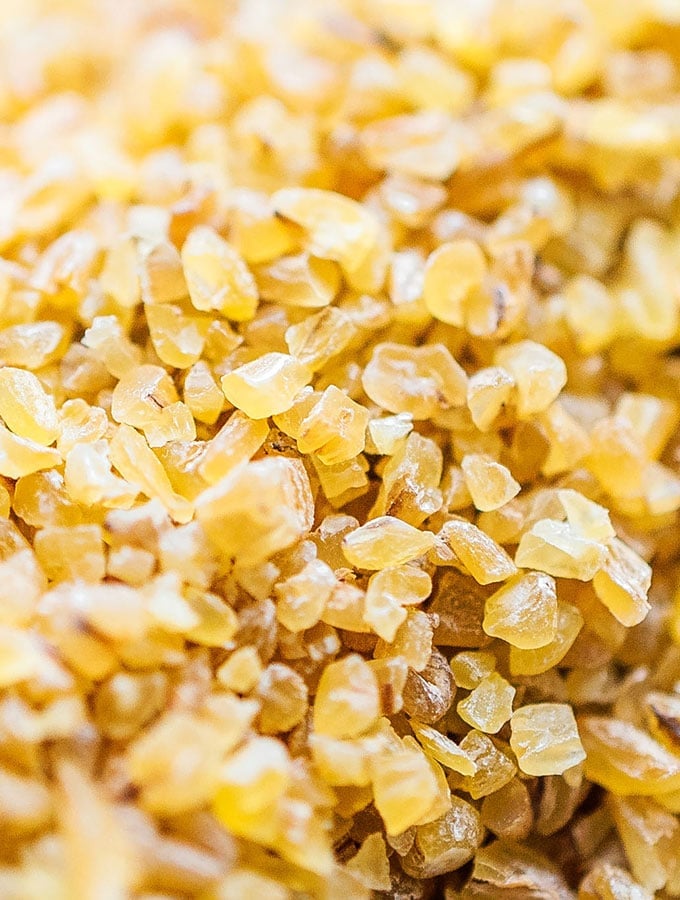
Bulgur and Couscous: What’s the difference?
Both bulgur and couscous are small, hearty “grains”. But while they look similar, they are different in a number of ways! Let’s break down what differentiates bulgur and couscous.
Bulgur is made from the whole grain of wheat. This grain (or “groat”) is partially boiled, dried, and cracked, resulting in a whole grain product that cooks relatively quickly.
Couscous, on the other hand, is a small manmade pasta produced with semolina wheat flour. Given that it contains wheat, couscous is also not gluten-free.
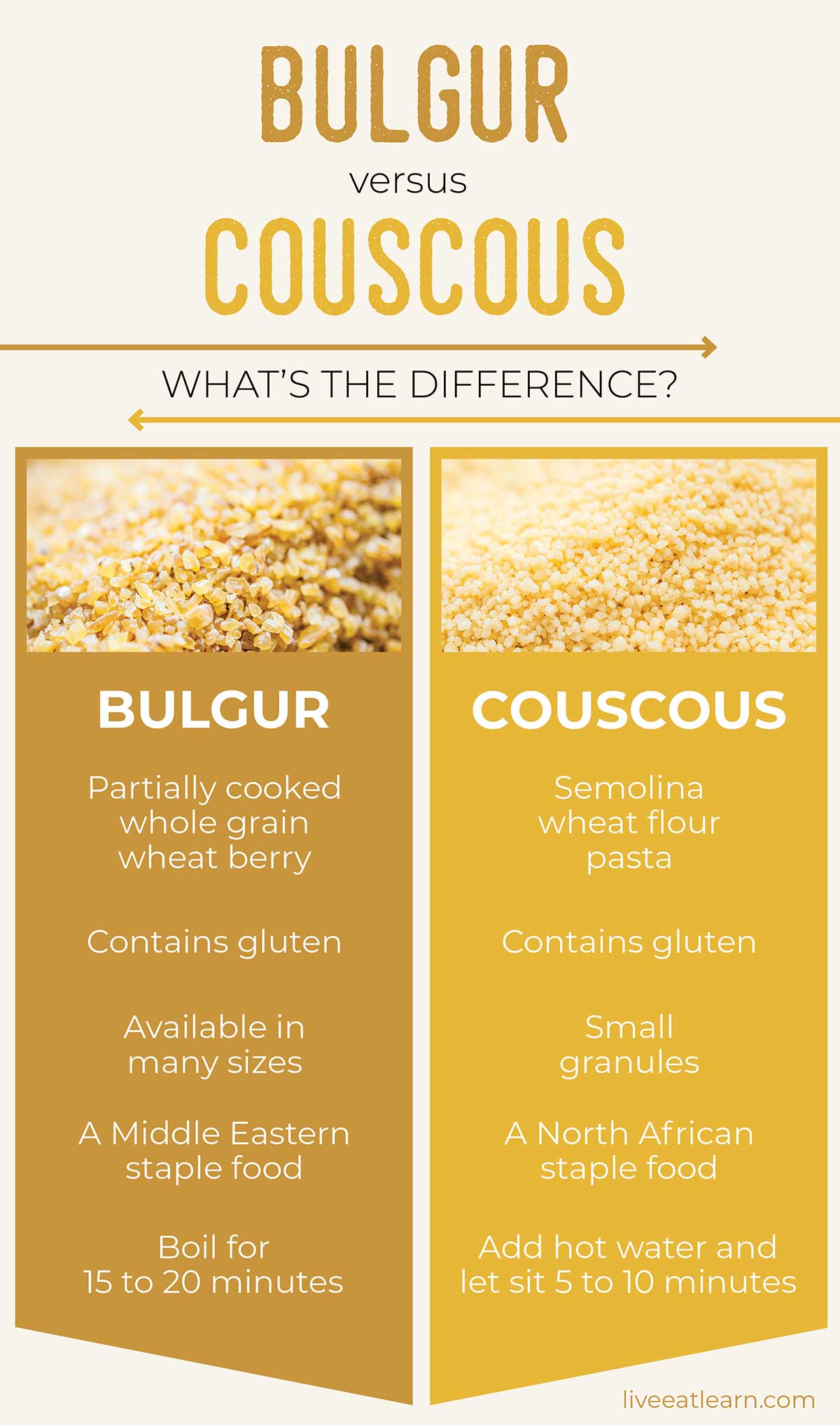
Bulgur
Bulgur is a common ingredient in Middle Eastern cooking. With a mild nutty flavor, it can be used in salads, stir fries, or wherever you might use couscous, quinoa, or rice.
Bulgur Nutrition: One cup of cooked bulgur contains 34g carbohydrates, 6g protein, 0g fat, 8g fiber, and 151 calories. In terms of micronutrients, bulgur is especially rich in manganese, B vitamins, and iron.
While bulgur does contain a good amount of protein, it is not a complete protein (like quinoa is).
The Glycemic Index (GI) of bulgur is 48, which is lower than the GI of couscous. A low GI means it will cause less of a spike in your blood sugar.
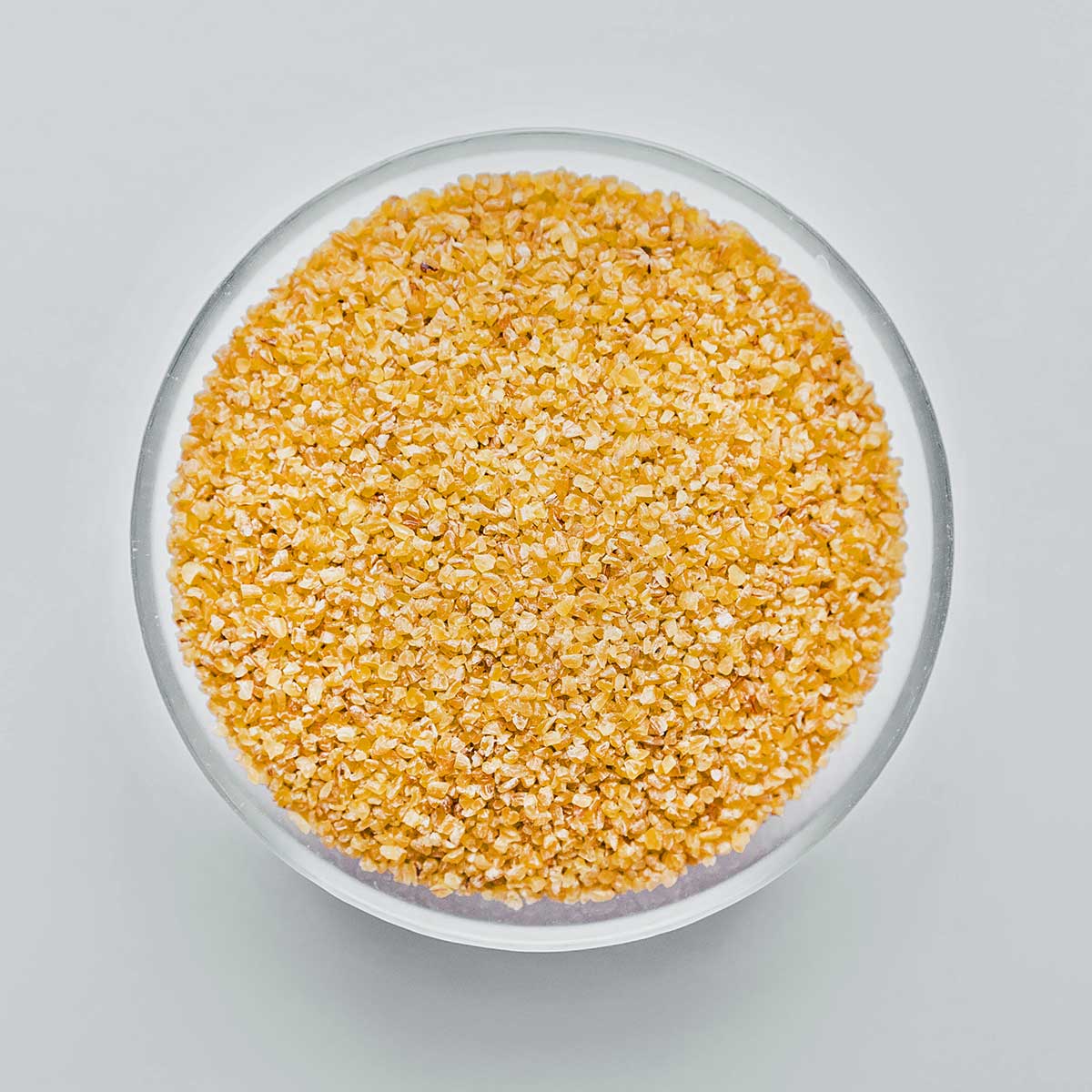
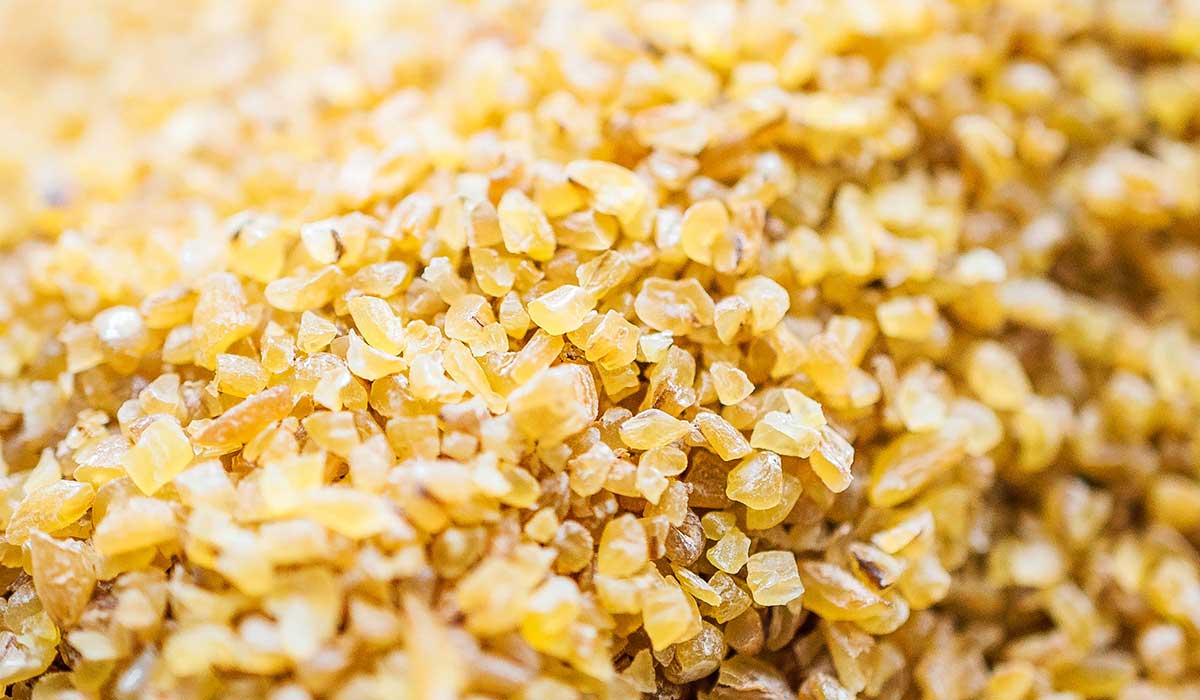
Bulgur Varieties: Bulgur comes in four different varieties, depending on how finely it is ground (or “cracked). Read more about the varieties of bulgur here.
Cooking Bulgur: Bring water to a boil (2 parts water for 1 part bulgur), then add bulgur. Cook, covered, for 15 to 20 minutes, until water is absorbed and bulgur is fluffy. Learn how to cook bulgur by soaking here.
Bulgur Recipes: Bulgur can be used in place of rice, as a breakfast “oatmeal”, or to add a boost of belly-filling nutrition to salads. Here are a few of our favorite bulgur recipes:
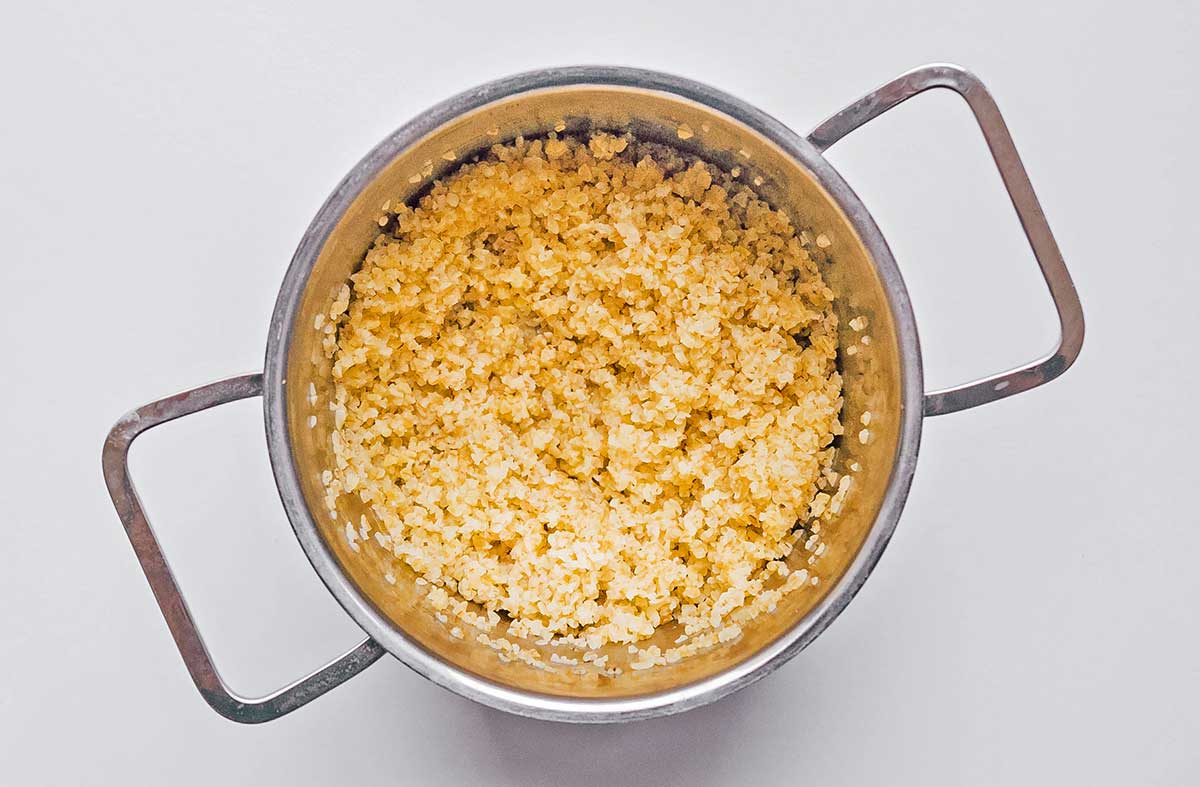
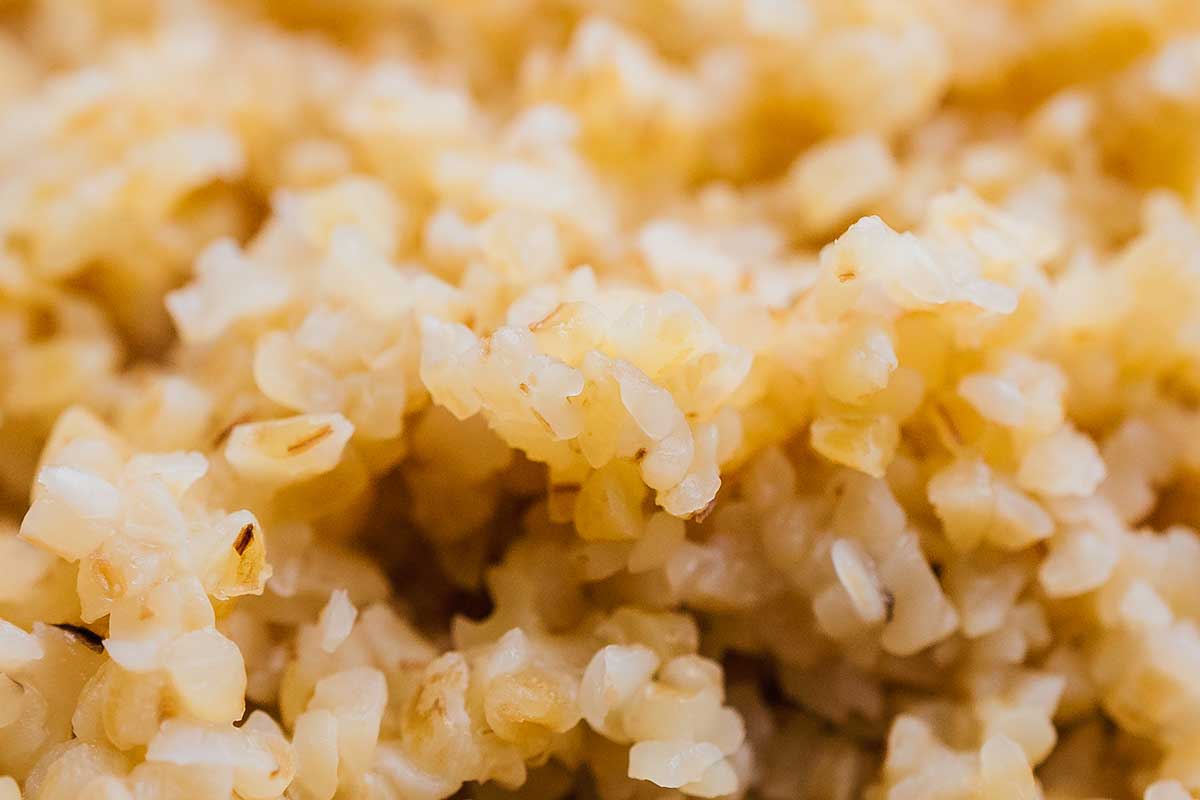
Couscous
Couscous (pronounced KOOS-koos) is a staple food in many Middle Eastern and North African countries. It is a small pasta made from coarsely ground semolina (durum wheat). This is a high-gluten flour, meaning couscous is not suitable for those with Celiac’s.
Couscous Nutrition: 1 cup of cooked couscous contains 37g carbohydrates, 6g protein, 0.3g fat, 2.2g fiber, and 176 calories.
The GI of couscous is 65, meaning it will cause greater spikes in your blood sugar than bulgur will.
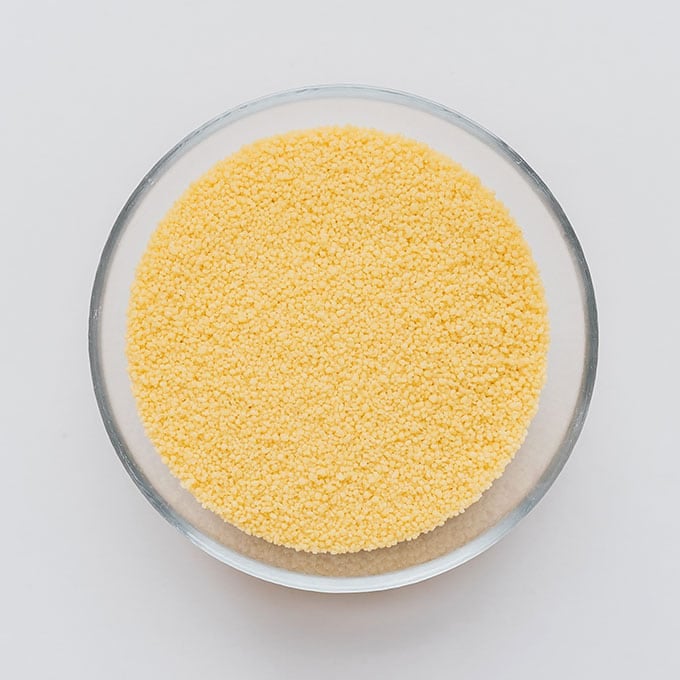
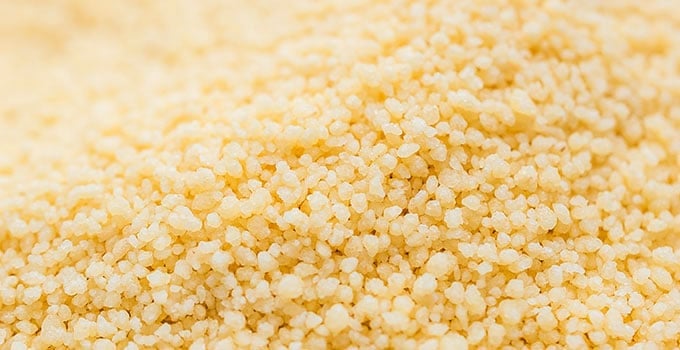
Couscous Varieties: Most couscous you will find in Western supermarkets are instant couscous, making it quick cooking. You may also find Israeli couscous (aka pearl couscous), which is made of larger, pillow-like granules.
Cooking Couscous: To cook couscous, use 1 part couscous for 1.5 parts water. Simply pour boiling water over the couscous, cover, and let steam until water is absorbed, 5 to 10 minutes. It is best seasoned with a bit of butter and salt.
To cook Israeli couscous, use 1 part Israeli couscous for 1.25 parts water. Bring water to a boil and add couscous. Cook, covered, for 10 to 15 minutes, until water is absorbed and couscous is fluffy.
Couscous Recipes: Couscous is a great lower calorie grain to add to the table, either in place of brown rice, as a base for roasted veggies, or mixed into salads. Here are a few of our favorite couscous recipes:
- Israeli Couscous Salad with Beet and Feta
- Mediterranean Couscous Salad
- Herbed Couscous Salad
- Moroccan Spiced Vegetable Couscous
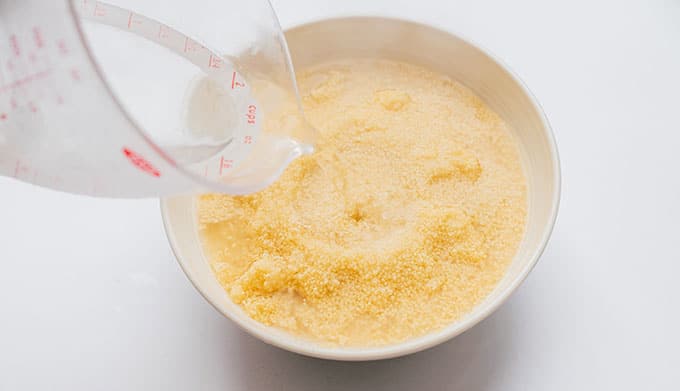
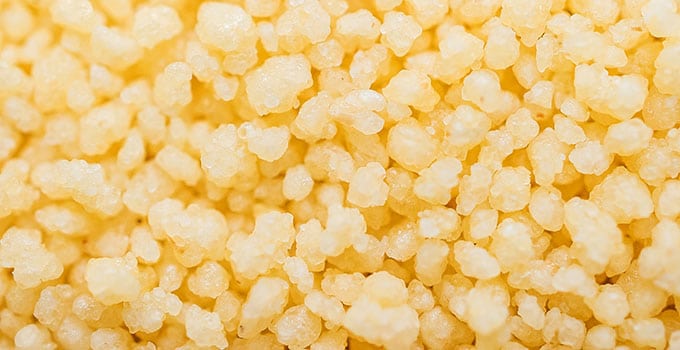
So which is best?
In terms of overall health, bulgur wins! With less calories, more fiber, and more micronutrients (all due to it being a whole grain), this bulgur is the healthier choice.
Curious about ancient grains? Learn more about quinoa, bulgur, and freekeh.
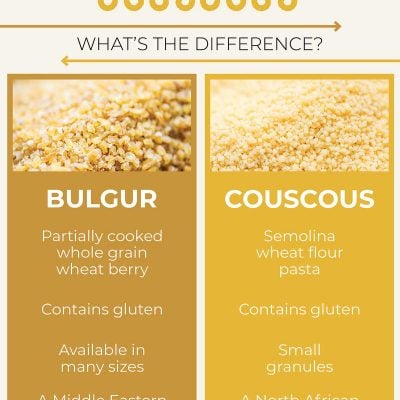
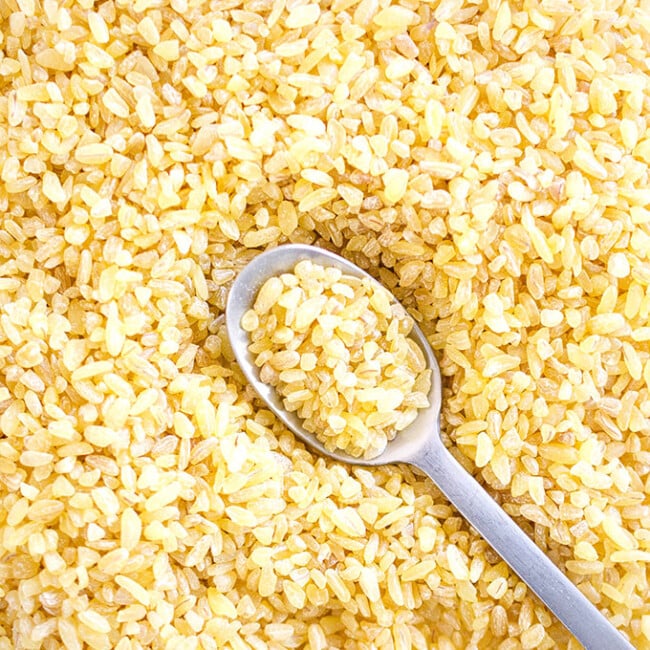
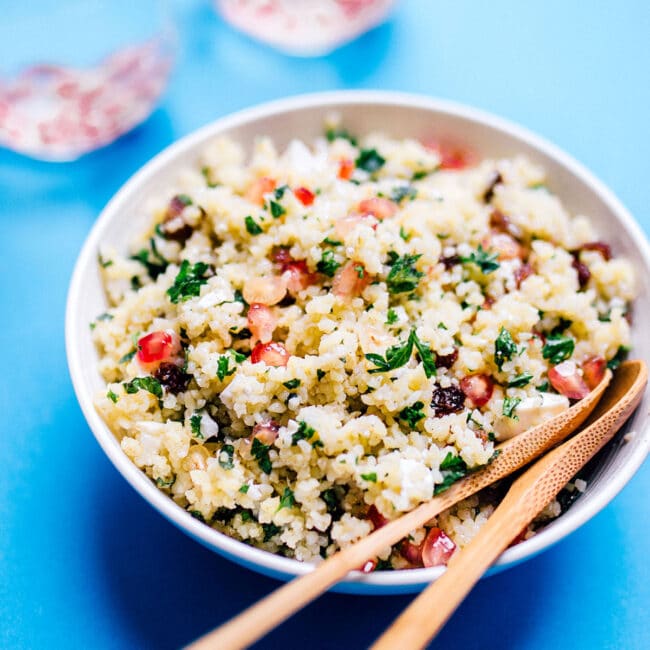
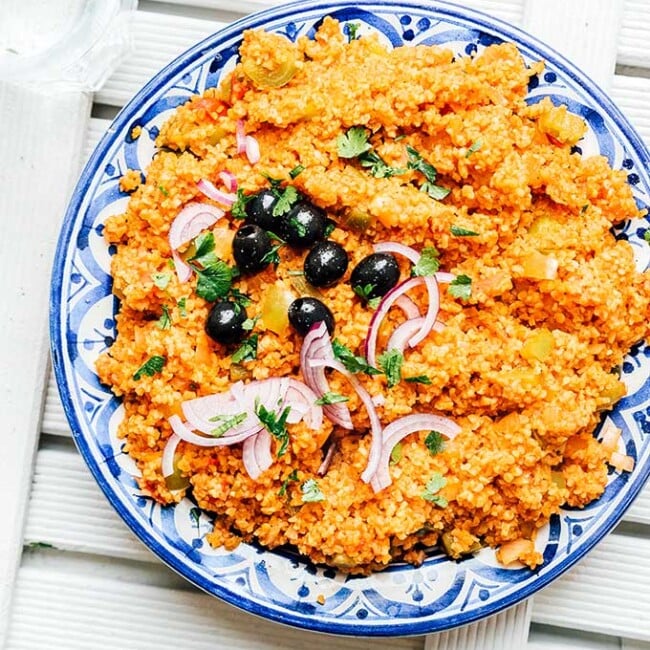
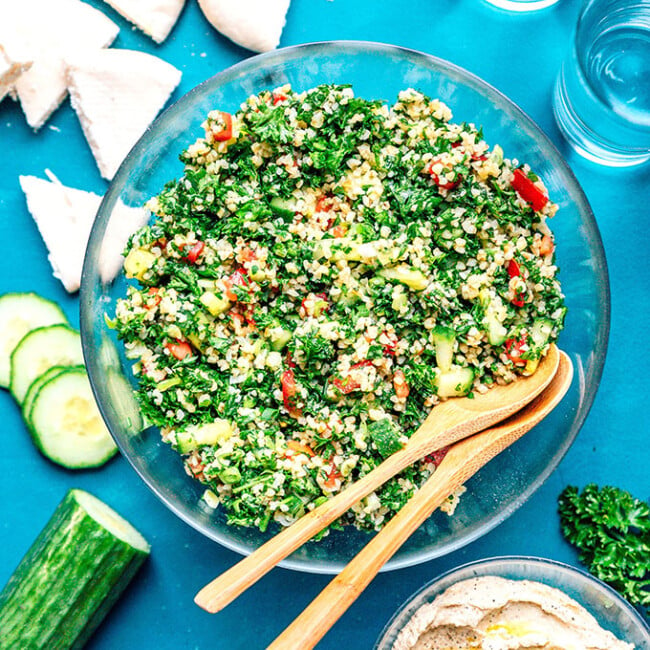
Charles says
Very helpful, thank you.
Therez says
Thanks a lot.
Now, I can make the right choice.
Leticia says
I have something in a jar that could be either couscous or bulgur. How can I tell the diffeence?
Sarah says
Couscous is much smaller and more fine, with a rounder shape. Bulgur would be large and a bit irregular shaped.
Wendy says
I do agree that bulgur is more irregular than couscous, but I have to disagree with Sarah. Bulgur comes in many “sizes”. I have a #3 bulgur, and it’s much smaller than the couscous I have.
Carmen Peters says
Cook some and see if it reacts to the cooking method as you would expect.
Jennifer says
In the very 1st paragraph you call cous cous a grain. This may be confusing for people and misleading. Really, they are nothing alike.
Vasanti Patel says
For a 73 year old female with digestive issues, is what brought me to your website, thank you.
Any suggestions from you regarding quality foods would be appreciated. I can’t eat rice duets itching in my fingers from arthritis. Appreciation from this senior, Vasanti Patel.
rosemond antwi says
Helpful.Thanks